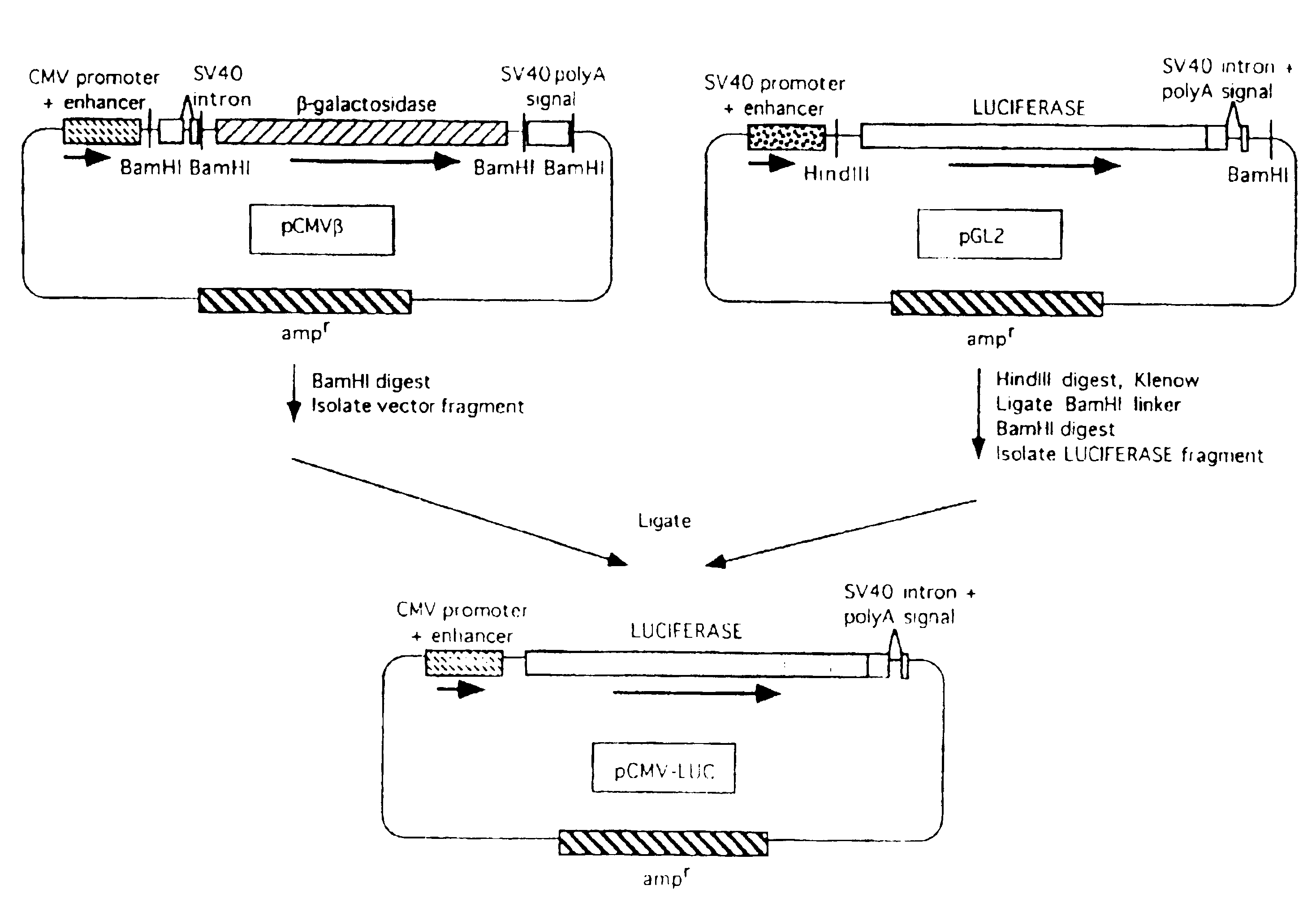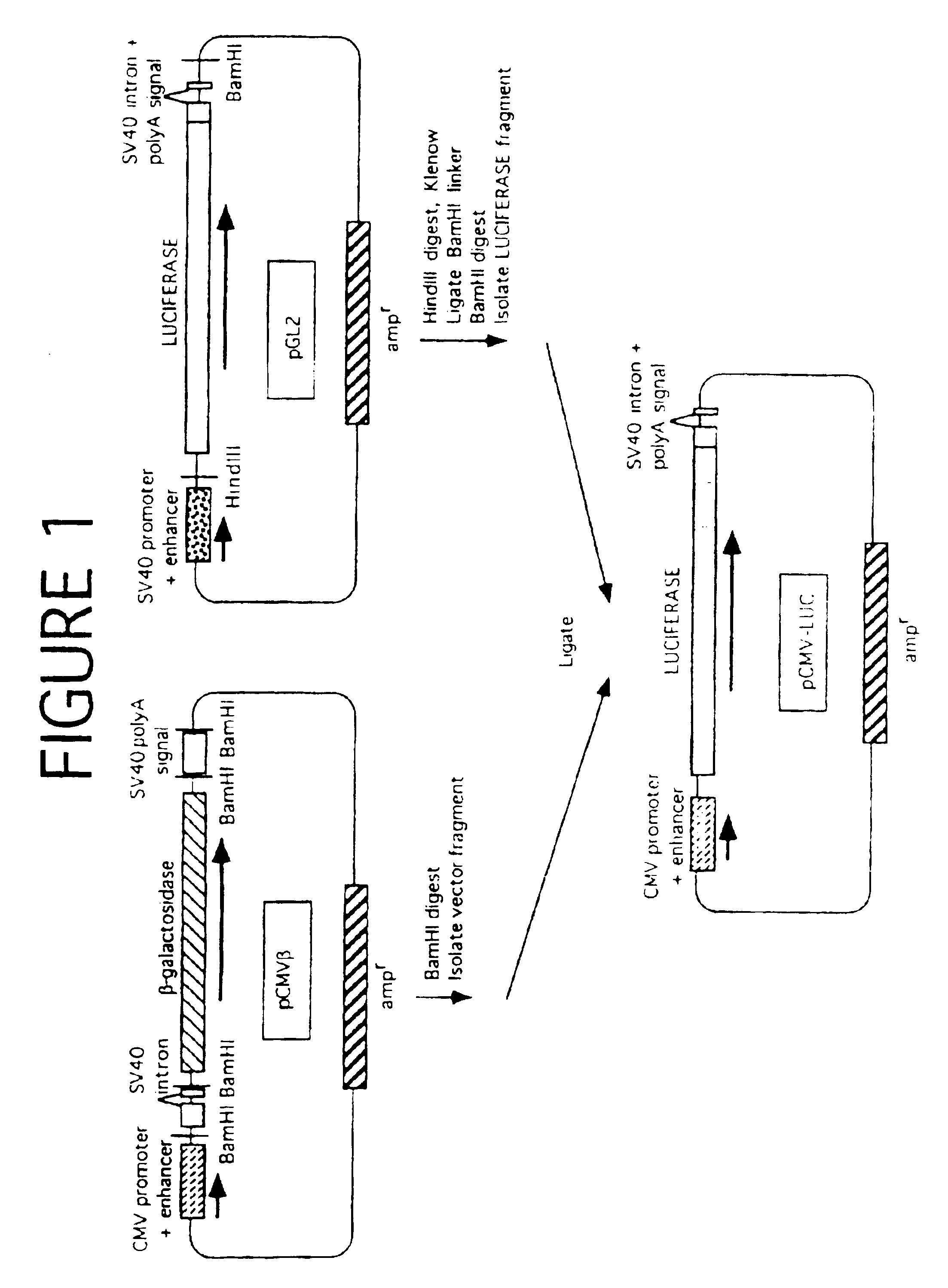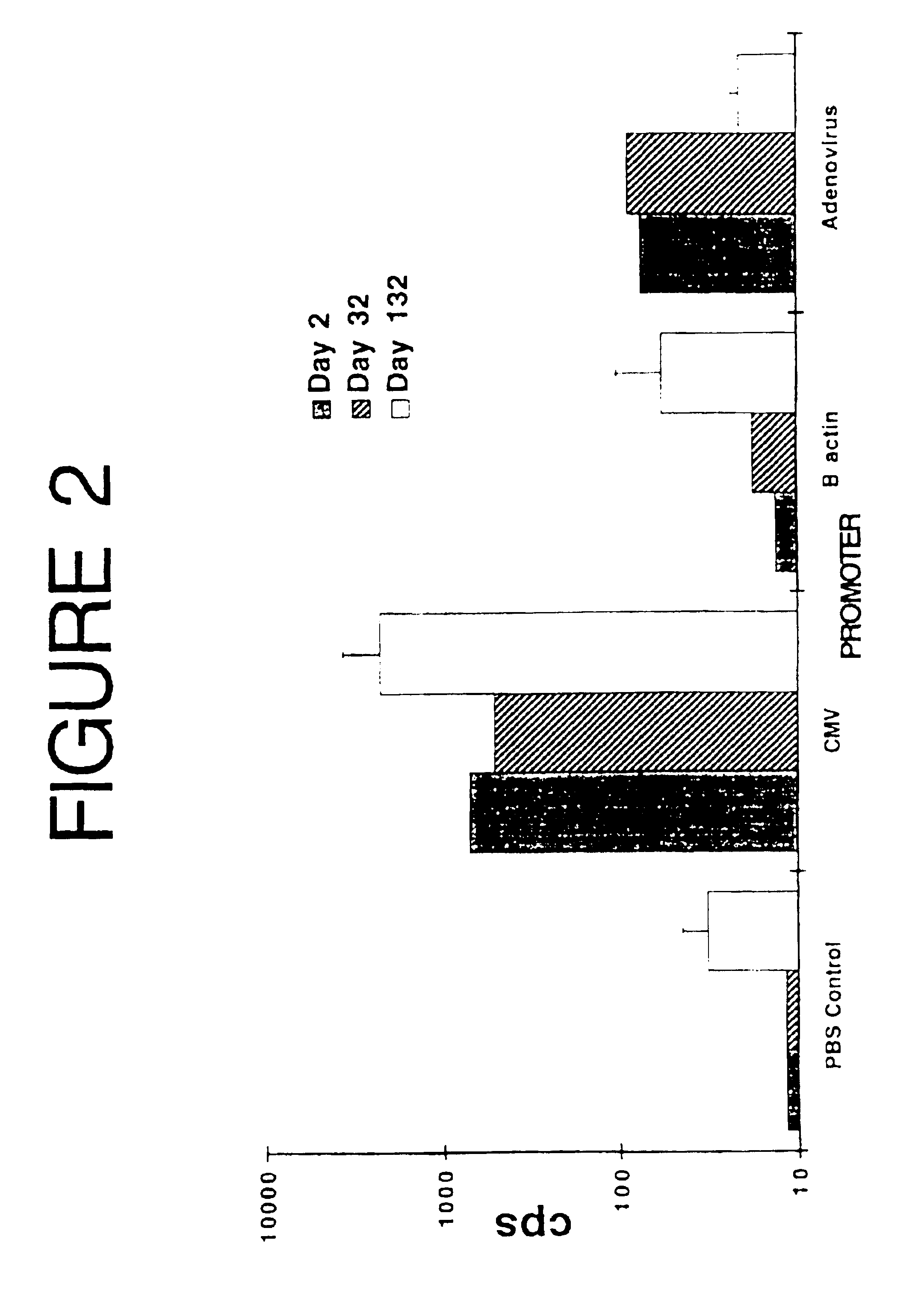Plasmid-based vaccine for treating atherosclerosis
a technology of atherosclerosis and plasmids, applied in the field of immunology, can solve problems such as function disruption
- Summary
- Abstract
- Description
- Claims
- Application Information
AI Technical Summary
Benefits of technology
Problems solved by technology
Method used
Image
Examples
example i
Selection of the Optimal Promoter / enhancer and Derivation of the pCMV-LUC Plasmid
[0068]This experiment was designed to evaluate the effectiveness of several promoter / enhancers to express a reporter gene (luciferase) and elicit immune responses, to select the best one for use in future vaccination experiments.
[0069]Three different plasmids were constructed, with the firefly luciferase gene expressed under the control of the β-actin, the adenovirus, or the human cytomegalovirus (CMV) immediate early promoter / enhancer. Since the CMV construct (pCMV-LUC) was used in further experiments, details of its construction are as follows.
[0070]The CMV promoter / enhancer, with the pUC19 plasmid vector backbone containing the ampicillin resistance gene (ampr), was excised by digestion with BamHI from the plasmid pCMVβ (Clontech Laboratories, Palo Alto, Calif.). The luciferase gene (LUC), with adjacent splice donor / acceptor sites and polyadenylation signal derived from SV40, was generated from the p...
example ii
pCMV-CETP / TT Plasmid Vaccine Design and Construction
[0076]The rabbit CETP fragment corresponding to the C-terminal amino acids 481-496 (see, SEQ ID NO: 2) has been identified to contain the functional, neutral lipid binding site of rabbit CETP. This fragment includes the epitope recognized by TP2, an anti-CETP monoclonal antibody that inhibits CETP activity (Swenson, T. L., et al., J. Biol. Chem., 264: 14318-14326 (1989)). A second epitope of rabbit CETP (amino acids 350-368 of SEQ ID NO:2) was selected for the plasmid-based vaccine to elicit antibodies to a second epitope which would allow the formation of immune complexes involving CETP, and consequently promote the clearance of the immune complexed CETP. This epitope was selected for its potential antigenicity and high possibility for surface expression on native CETP.
[0077]A tetanus toxoid sequence recognized as almost universally antigenic (Panina-Bordignon, P., et al., Eur. J. Immunol., 1989: 2237-2242 (1989)) was selected as ...
example iii
Vaccination of Rabbits with the pCMV-LUC and pCMV-CETP / TT Plasmids
[0082]An experiment employing a rabbit model for atherosclerosis (Daley et al., Arterioscl. Thromb. 14: 95-104 (1994)) was designed to test whether a DNA plasmid-based vaccine according to this invention would break tolerance to endogenous CETP resulting in production of antibodies reactive with endogenous CETP and / or inhibition in the development of atherosclerotic lesions in the rabbit aorta. New Zealand white rabbits (n=8) were immunized with both plasmids pCMV-LUC and pCMV-CETP / TT and monitored for production of anti-luciferase and anti-CETP antibody production as well as for the ability to inhibit progression of atherosclerosis when placed on atherogenic diets, i.e., diets supplemented with amounts of cholesterol known to generate definite and extensive atherosclerotic lesions in control rabbits (Daley et al., id.). The daily protocol for this experiment employing 13 rabbits is shown in FIG. 6.
[0083]Eight rabbits...
PUM
| Property | Measurement | Unit |
|---|---|---|
| density | aaaaa | aaaaa |
| concentration | aaaaa | aaaaa |
| density | aaaaa | aaaaa |
Abstract
Description
Claims
Application Information
 Login to View More
Login to View More - R&D
- Intellectual Property
- Life Sciences
- Materials
- Tech Scout
- Unparalleled Data Quality
- Higher Quality Content
- 60% Fewer Hallucinations
Browse by: Latest US Patents, China's latest patents, Technical Efficacy Thesaurus, Application Domain, Technology Topic, Popular Technical Reports.
© 2025 PatSnap. All rights reserved.Legal|Privacy policy|Modern Slavery Act Transparency Statement|Sitemap|About US| Contact US: help@patsnap.com



